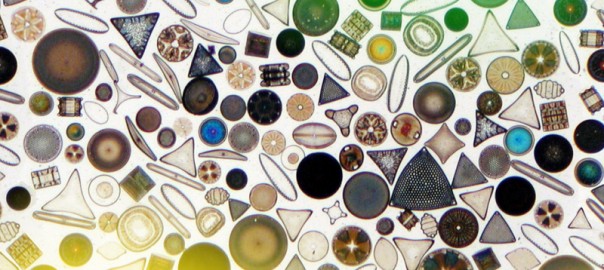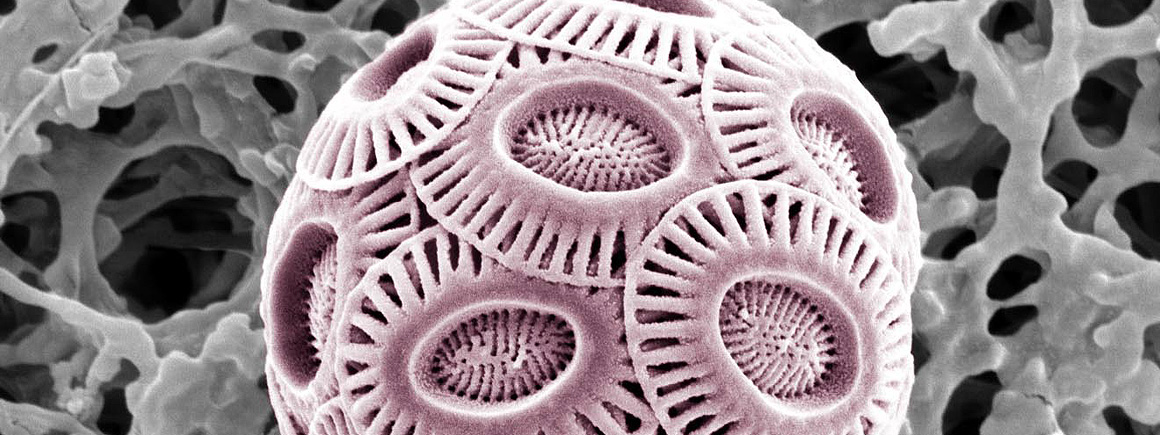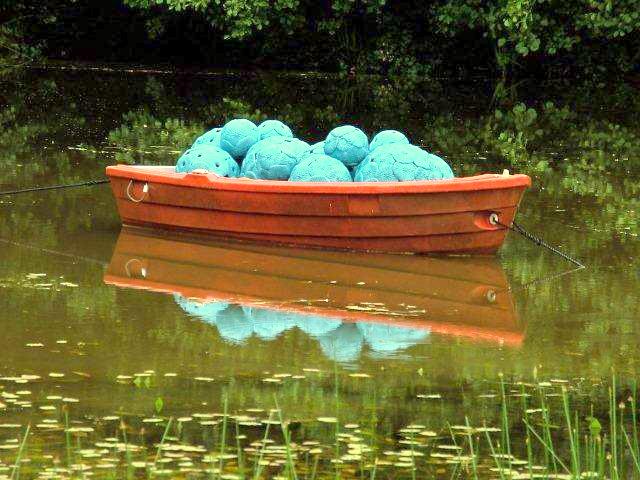Oceans are “populated” by millions of specimens of microscopic organisms which constitute the phytoplanktonic communities (e.g. diatoms, dinoflagellates, cyanobacteria and coccolithophorids). These tiny organisms are important indicators of the “health” of present oceans and their remains constitute important tracers of past paleoenvironmental conditions. The ocean is in fact the oldest and largest ecosystem on Earth and best records global changes in climate and atmospheric composition, as well as major variations in physical, chemical and trophic parameters. This is particularly important since recent environmental changes, pose urgent questions regarding biota ability to cope with rapid and progressive climatic changes accelerated by anthropogenic emissions of greenhouse gases. A major issue of present global environmental perturbations, regards the impact of rapid warming and climate instability on ecosystems. Concerns are therefore addressed to the possibility that biodiversity loss will soon derive from biota failure in sustaining such profound alteration of ecosystems.

(http://darwinproject.mit.edu/)
It is well known that increasing CO2 is inducing pH lowering. This has an effect on CaCO3 saturation state and calcite compensation depth in the oceans with consequent problems for calcifying organisms such as corals and microplankton: these groups become vulnerable and unable to produce their shells-skeletons if the acidity passes a critical level. At present, decreased calcification could have negative impacts not only on marine ecosystems, but also on marine food chain (and resources) at global scale.

Coccosphere of E. huxleyi (http://www.nhm.ac.uk)
One phytoplanktonic group which can provide important information regarding past and present response to environmental perturbations is constituted by coccolithophorids. Coccolithophores are golden-brown algae (phylum Haptophyta) which live in the upper photic zone and that developed the ability to secrete tiny calcite crystals and arrange them to build an exoskeleton called coccospheres.
Although these algae are extremely tiny (a few microns), they are important primary producers. The biocalcification process made coccolithophores rock-forming organisms during the Jurassic and Cretaceous and they were/are directly involved in the total carbon budget by influencing the carbon cycle via photosynthesis and biocalcification. We understand how these organisms are widespread in the oceans and, consequently, important for the carbon cycle by looking at blooms of the coccolithophore E. huxleyi which are visible from space!

Under certain conditions, Emiliania huxleyi can form massive blooms which can be detected by satellite remote sensing. The white could is the reflected light from billions of coccoliths floating in the water-column. Details: Landsat image from 24th July 1999, by Steve Groom.
One commonly used approach to derive projections of how ecosystems will look in the future is to perform experiments on living forms. The data obtained from several experiments over the last decades, evidenced a direct impact of increasing CO2 emissions on coccolithophores but several questions are still open regarding the mechanisms involved during biocalcification and the role of combined high CO2 with other stressing factors. Scientists have to work to understand the capability (and velocity) of coccolithophores to adapt to these environmental changes as well as to understand the interaction of different parameters on biocalcification and their effect on the ocean/atmosphere system.
Additional methods of investigation can be applied to model the evolution of the ocean from the recent past to the near future, as for example presented in a published work based on satellite observations. The dataset indicates that the Arctic Ocean and its surrounding shelf seas are warming much faster than the global average, potentially opening up new distribution areas for temperate‐origin marine phytoplankton. The data already show that increased inflow and temperature of Atlantic waters in the Barents Sea resulted in a striking poleward shift in the distribution of blooms of E. huxleyi (Neukermans& Fournier 2018).

Fossil coccosphere of Watznaueria barnesiae (Black) Bukry 1969 (http://ina.tmsoc.org).
Last but not least, geologists can obtain important information which cannot be acquired via laboratory experiments. For example, it is not possible to capture the ability of organisms to migrate or to select and evolve. Experiments are often limited to a select few species and cannot represent the complexity of ‘real’ ecosystems. Moreover, “environmental scientists” deal with time scales of day to decades but geoscientists work on records of thousands to millions of years and look at the largest “natural laboratory” on earth captured in sedimentary rocks and their fossil content. Only through the combination of the information that can be gained via experiments, via new techniques and the study of microfossils, scientists will be able to help understanding the Earth system at longer time scales (than human observations) and make prediction about the response of our planet to profound climatic perturbations.

Outdoor water-based ceramic sculpture ‘Coccolithophores’ by Michelle Maher at Sculpture in the Gardens 2010 at Brigit’s Garden, Co. Galway. The piece was inspired by a microscopic algae organisms the Coccolithophore. www.ceramicforms.com
References
Griet Neukermans and Georges Fournier, Optical Modeling of Spectral Backscattering and Remote Sensing Reflectance From Emiliania huxleyi Blooms, Frontiers in Marine Science, 10.3389/fmars.2018.00146, 5, (2018).
